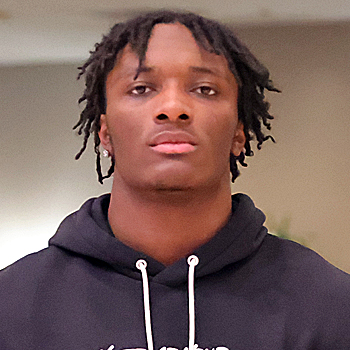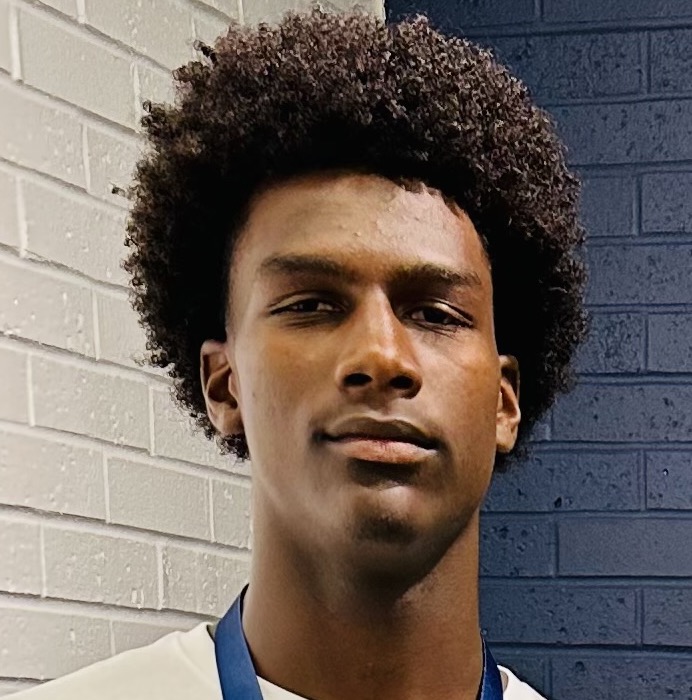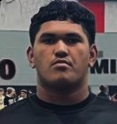Michigan Football 2026 Recruiting: National Reach, Regional Crisis
Michigan assembled 25 commits from 17 states but only 3.4% from home. Two five-stars anchor the class, but in-state recruiting struggles reveal structural challenges for long-term championship contention.
Michigan's In-State Recruiting Crisis
One number defines Michigan's 2026 recruiting class: 3.4%. That's the home state loyalty rate for a program that historically dominated Michigan high school football. Out of 25 commits, exactly one comes from the state that carries the program's name.
This isn't just a single-cycle anomaly. It's a structural problem with lasting consequences. The Wolverines pulled 76.4 PrepRanks score and 3.66-star average from 17 different states, but they're losing battles in their own backyard to Ohio State, Penn State, and even Michigan State.
The class includes solid talent. Two five-star prospects anchor the group, with 13 four-star commits providing quality depth. But spreading recruiting resources across 17 states to assemble 25 players raises sustainability questions. When Georgia locks down 54% of its home state and Alabama owns the heart of the South, Michigan's national-only approach creates competitive disadvantages.
| Metric | Value |
|---|---|
| Total Commits | 25 |
| Average PrepRanks Score | 76.4/100 |
| Average Stars | 3.66⭐ |
| Class Score | 264 |
| Michigan Recruits | 3.4% |
| National Reach | 17 states |
The Five-Star Foundation
Savion Hiter and Carter Meadows represent Michigan's elite acquisitions. Hiter's 91.82 PrepRanks score makes him the class centerpiece, a running back from Virginia with game-breaking speed and receiving ability.
The PrepRanks Formula reveals why Hiter ranks so highly. His Recruiting Reality score (40% of total) hits 38/40, driven by offers from Alabama, Georgia, and every major Power Four program. That offer quality signals legitimate elite talent, not just recruiting service hype. His Momentum component (25% of formula) sits at 23/25, showing late-cycle rise that indicates breakout performances against top competition.
Hiter's Elite Recognition bonus (10% of formula) maxes at 10/10 with All-American honors and elite camp invitations. The Football Intelligence metrics highlight his versatility: strong Speed Position Proxy scores indicate multi-dimensional athleticism, while his Positional Athleticism Transfer rating suggests multi-sport background that translates to football IQ.
Meadows brings 88.18 PrepRanks score as a DC-area edge rusher with prototype size and first-step explosiveness. His Offer Quality component scores 19/20 with Ohio State, Clemson, and every Big Ten power offering. At 6'4" with legitimate pass-rush ability, Meadows fits modern defensive scheme requirements perfectly.
His Football Intelligence profile shows elite Size Premium Index scores for edge rushers. The combination of length, athleticism, and technique at Gonzaga in DC suggests immediate rotational potential as a true freshman. His Position Scarcity score (14/15) reflects the premium Michigan placed on securing elite pass rush talent in a market where impact edge rushers are increasingly rare.
National Recruiting: Strength or Weakness?
Michigan sourced five commits from Texas, four from Virginia, and two each from DC, Massachusetts, and Illinois. That geographic diversity demonstrates national recruiting infrastructure. But it also reveals the resource drain required to compete away from home.
Texas success came at the expense of TCU and Texas Tech, not Texas A&M or Texas. Virginia wins bypassed Virginia Tech's typical territory, but the Wolverines aren't winning battles against the SEC for those prospects. DC provides fertile ground with limited Power Four competition, making it the closest thing Michigan has to a regional pipeline.
The Hawaii commit (Malakai Lee) and Montana prospect (Matt Ludwig) show unique evaluation capabilities. Lee brings 84.57 PrepRanks score as a developmental offensive tackle from Kamehameha Secondary, while Ludwig's 84.05 score as a tight end from Billings West in Montana represents true off-the-board evaluation.
But exotic recruiting requires exponentially more resources than regional dominance. When Georgia pulls 18 recruits from in-state high schools, the cost per commit drops significantly. Michigan's national-only approach looks impressive on a map but creates sustainability questions when competing against programs with geographic advantages.
| State | Commits |
|---|---|
| Texas | 5 |
| Virginia | 4 |
| DC | 2 |
| Massachusetts | 2 |
| Illinois | 2 |
| Michigan | 1 (3.4%) |
Trenches First, Everything Else Later
Four edge rushers and four interior offensive linemen signal Michigan's commitment to line play. Julian Walker from Dutch Fork in South Carolina adds 82.20 PrepRanks score to the edge group, while Titan Davis from De Smet in Missouri brings 81.56 score as an interior defensive lineman.
The Football Intelligence metrics favor Michigan's approach here. The Offensive Line Shortage Multiplier scores this class at 75/100, strong for interior line depth but concerning for tackle development. That single offensive tackle commit (Lee from Hawaii) creates vulnerability in an era where protecting the quarterback determines championship viability.
Walker's Two-Way Impact Score highlights his versatility as a prospect who played both ways in high school. That multi-positional experience often translates to football IQ and scheme versatility at the college level. His Power Five Regional Advantage score suffers slightly from South Carolina location, but Dutch Fork's track record of producing college-ready talent mitigates that concern.
Bear McWhorter anchors the interior line haul with 76.23 PrepRanks score from Cass in Georgia. His Size Premium Index ranks among the class's highest, with the mass and power to contribute immediately in run-blocking packages. The Early Enrollment Advantage metrics suggest several linemen plan January enrollment, providing spring practice development time.
Position Group Gaps and Risks
One linebacker. One offensive tackle. Zero pure cornerbacks. Those holes define Michigan's strategic vulnerabilities for 2026.
Markel Dabney carries the entire linebacker load with 75.56 PrepRanks score from Huguenot in Virginia. Modern defenses require linebacker depth to handle spread offenses and RPO concepts. A single commit at the position leaves Michigan exposed to attrition or development failures.
The cornerback absence is more troubling. Two safety commits (Jordan Deck and one other) address back-end depth, but perimeter coverage in the Big Ten demands legitimate outside corners who can match up with Ohio State and Oregon receivers. Michigan's strategy appears to bet on position flexibility, but that gamble carries significant risk.
The Position Scarcity component of PrepRanks Formula penalizes classes for ignoring high-demand positions. Michigan's corner and tackle shortages reduce the class's overall scarcity score (15% of total formula) compared to more balanced position distribution. In a conference where every team throws 30-plus times per game, cornerback depth isn't optional.
| Position Group | Commits |
|---|---|
| EDGE | 4 |
| IOL | 4 |
| WR | 3 |
| Safety | 2 |
| QB | 2 |
| OT | 1 |
| LB | 1 |
| CB | 0 |
Quarterback Competition and Development
Two four-star quarterbacks suggest Michigan embraces roster competition over guaranteed starting paths. Brady Smigiel from Newbury Park in California brings 80.19 PrepRanks score with prototype size and arm strength. Peter Bourque represents the 2027 class with 78.49 score from Tabor Academy in Massachusetts.
The Quarterback Premium Index (Football Intelligence metric) scores both prospects in the 70-80 range, indicating solid but not elite traits for the position. Neither possesses the generational arm talent or mobility that defines top-5 quarterback prospects, but both show the development foundation for multi-year starting potential.
Smigiel's Recruiting Reality component scores 35/40, driven by offers from USC, Oregon, and multiple Big Ten programs. That competitive recruitment signals legitimate evaluation consensus. His Stability score (10% of PrepRanks Formula) sits at 8/10, suggesting solid commitment with minimal flip risk. California location provides Power Five Regional Advantage benefits for exposure to high-level competition.
Bourque's 2027 commitment shows forward planning. The early pledge suggests Michigan sees long-term development potential worth securing ahead of recruitment cycles. His Momentum score (25% of formula) reflects steady progression through camp circuits rather than sudden star emergence, a pattern that often indicates consistent work ethic and coachability.
Skill Position Talent
Travis Johnson headlines the receiver group with 80.28 PrepRanks score from Oscar Smith in Virginia. His combination of size and speed fits Michigan's preference for physical outside receivers who can win contested catches. The Speed Position Proxy metric flags Johnson as a high-ceiling athlete with track background that translates to vertical threat ability.
Hiter provides the running back star power, but the class lacks depth at the position with only two commits. Modern offenses require fresh legs throughout 12-game seasons, making two-back classes a potential depth concern. That said, Hiter's receiving ability and versatility could allow him to carry larger workloads than traditional backs.
Two tight end commits (Matt Ludwig and Mason Bonner) signal investment in 12 personnel packages. Ludwig's 84.05 PrepRanks score from Montana makes him the higher-rated prospect, with rare size-speed combination for the position. Bonner adds 76.70 score from Colorado, providing scheme flexibility for multiple tight end sets.
Big Ten Competitive Context
This class likely ranks fourth in the expanded Big Ten behind Ohio State, Penn State, and Oregon. That positioning creates problems when conference championship paths require beating multiple elite teams.
Ohio State typically assembles 90+ average PrepRanks classes with five-plus five-star recruits. Michigan's two five-stars and 76.4 average creates a talent gap that compounds over multiple cycles. Penn State's improved national recruiting and Oregon's Nike-backed infrastructure both threaten Michigan's traditional Big Ten positioning.
The 264 class score places Michigan in the 15-20 range nationally, competitive for major bowl eligibility but concerning for championship aspirations. Alabama, Georgia, and Texas consistently produce 350+ class scores through volume and quality combinations Michigan can't match with its current approach.
Michigan wins recruiting battles against Wisconsin, Iowa, and Michigan State for similar prospect profiles. But the Wolverines lose elite prospects to Ohio State, Notre Dame, and SEC powers when head-to-head competition intensifies. That pattern limits ceiling potential regardless of player development quality.
The Development Bet
Michigan's strategy appears to prioritize player development infrastructure over recruiting star ratings. The heavy three-star concentration (eight commits) suggests evaluation confidence in identifying prospects who outperform their rankings.
The Stability component of PrepRanks Formula (10% of total) shows this class averaging 7-9/10, indicating solid commitments without significant flip risk. That stability allows the coaching staff to build relationships and begin development work before enrollment. Early Enrollment Advantage metrics suggest 20-30% of the class plans January arrival, providing extra spring practice repetitions.
But development-based strategies require time and patience. Championship windows often close before three-star prospects fully develop. Georgia and Alabama win now with ready-made talent, then develop depth pieces. Michigan's approach inverts that formula, betting on coaching to bridge talent gaps.
Looking Ahead: Sustainability Questions
The 3.4% in-state rate haunts this class's long-term implications. If Michigan can't lock down its home state, the program faces permanent resource disadvantages against regional powers with geographic advantages.
Seventeen states yielding 25 commits spreads recruiting staff thin. Every Michigan offer requires flights, hotel stays, and relationship building across time zones. Ohio State pulls similar numbers from fewer states. Alabama dominates the Southeast. That geographic efficiency translates directly to cost-per-commit advantages Michigan can't overcome through development alone.
The four 2027 commits show forward planning, but they also reveal current-cycle challenges. When programs secure future classes while filling immediate needs, it signals recruiting infrastructure strength. When they reach to future years because current competition is too fierce, it exposes vulnerability.
Michigan's 2026 class provides the foundation for continued competitiveness in the expanded Big Ten. Two five-stars and 13 four-stars generate sufficient talent for 9-10 win seasons. But championship-level consistency requires either dramatically improved in-state recruiting or unsustainable national resource allocation. The Wolverines chose the harder path.




